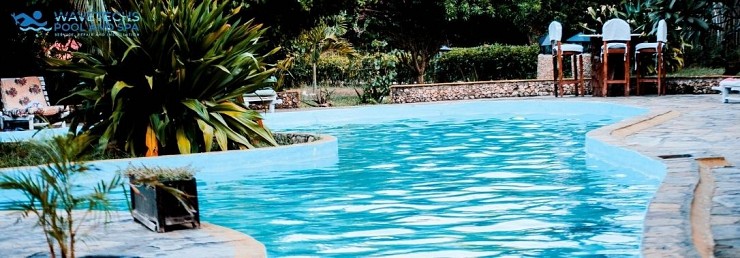
Saltwater pools have become the hot favorite across Texas for their smooth and gentle swimming experience. The chlorine scent is lighter, the water’s softer on the skin, and gentler on the eyes. The best part? Salt water pool maintenance in Keller, TX, is far less demanding than the old chlorine bucket approach! However, even with a salt system in place, a steady water chemistry balance is essential for clear and comfortable pool water. Any drifts in water balance mean cloudy water and avoidable pool salt system repairs. Regular testing and steady pool care are your mantras for a healthy saltwater pool that’s ready for every backyard splash!
1. Keep Salt and Chlorine Levels in the Sweet Spot
The salt and chlorine duo in your saltwater is what keeps your pool deliciously inviting. The generator converts dissolved salt into chlorine. However, it can only perform well when the salt is within the proper range of 2,700 to 3,400 ppm. Checking this once a week keeps you ahead of cloudy water surprises. Test strips give fast and reliable readings that act as a precautionary double with your pool readings. Add pool-grade salt for low levels and give it time to dissolve fully before you run the system. Next, take a look at your chlorine output. Your generator may need a slight boost if the water’s dull or you notice irritation. Chlorine drifting too high? Dial down the chlorine setting. Recurring problems with chlorine levels or an overworked salt generator are your cues for checks and pool salt system repair with WaveTechs Pool and Spa!
2. Fine-Tune pH, Alkalinity, and Stabilizer Metrics
Saltwater pools tend to drift upward in pH, which can catch new owners by surprise. The high pH creates cloudy water and unpleasant scaling on pool surfaces. On the flip side, low pH can cause discomfort for swimmers and accelerate corrosion. Aim for the pH sweet spot between 7.2 & 7.6! A small dose of the pH Increaser or Decreaser can bring things back into line.
Keep water alkalinity between 80–120 ppm to stabilize pH and protect pool equipment. Low alkalinity can make the pH swing windy. Weekly water testing and light adjustments will keep things steady. Regular pool shock is another smart step. Your reliable salt system needs an occasional boost to clear out contaminants and keep the water bright. Cyanuric acid( stabilizer) shields chlorine from the strong Texas sun. Without the stabilizer, UV rays can rapidly burn off your chlorine. Use in quantities suggested by your pool maintenance service in Keller, TX. Too much stabilizer can shut down chlorine altogether, and the only fix is to partially drain the pool. Less is truly more when it comes to salt pool stabilizer!
3. Show Some Well-Earned TLC to Your Salt Cell
The salt cell handles a tough job generating chlorine, with minerals passing over it day in and day out. Unfortunately, calcium can collect on the cell plates and reduce efficiency. Take a look at the cell every few weeks for calcium scaling. Remove the salt cell and rinse it clear of mild calcium. A salt cell cleaning solution can tackle the stubborn deposits. However, use it sparingly to avoid damaging the salt plate coating.
Schedule at least one professional inspection every season to inspect salt cell wiring, flow sensors, water pressure, and output levels. Pool maintenance in Keller, TX, by seasoned providers like WaveTechs Pool and Spa can help spot any hidden problems so you can fully relish your swimming season.
The Final Water Chemistry Word
Balanced water is the secret to smooth salt system function. Your generator lasts longer, and the water stays clear with the right water chemistry. Regular testing and a steady routine go a long way in keeping your pool dipping ready for warm afternoons and long family weekends.
Keep the water balance right and pay attention to small shifts to keep expensive pool salt system repair at bay. And dial WaveTechs Pool and Spa for expert pool maintenance in Keller, TX, for a divinely comfortable and sparkling pool. Happy swimming!









